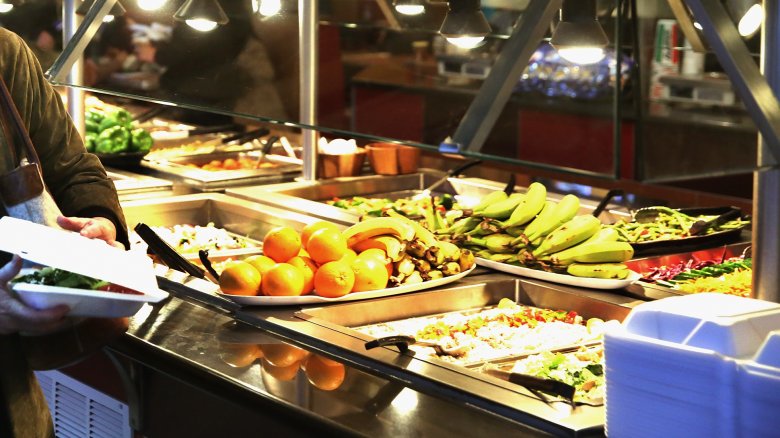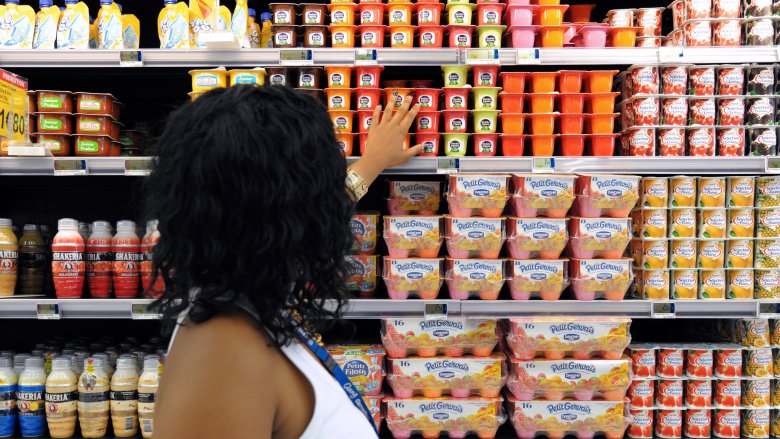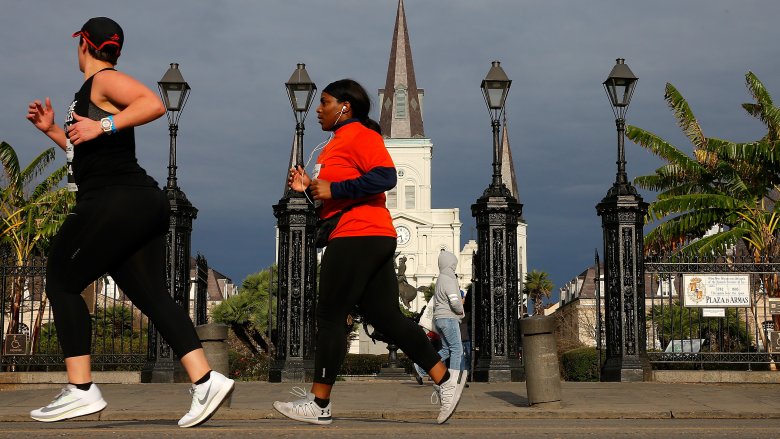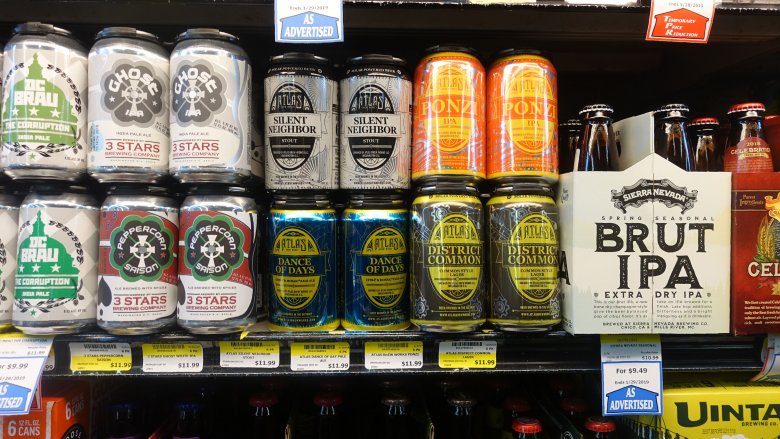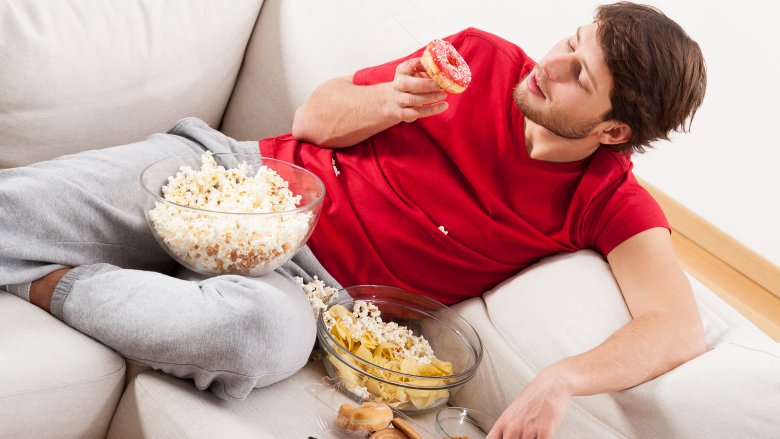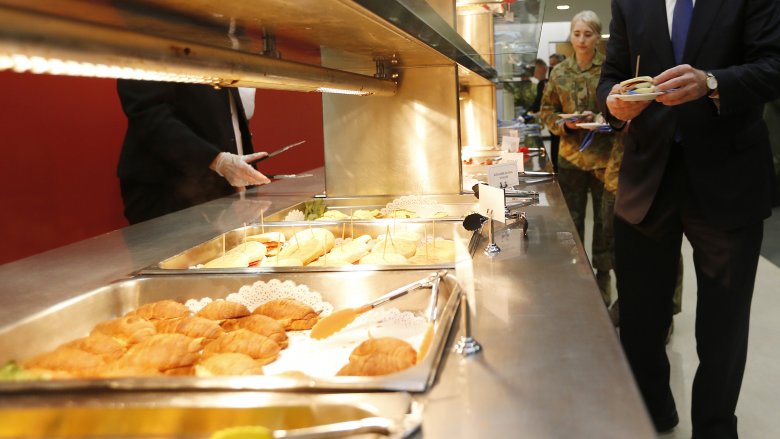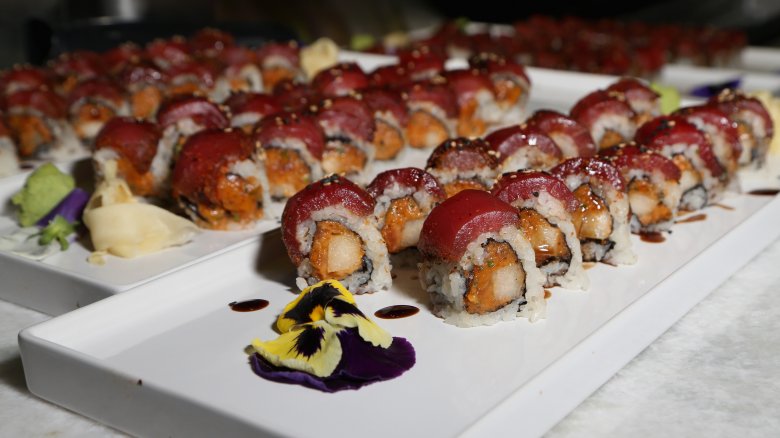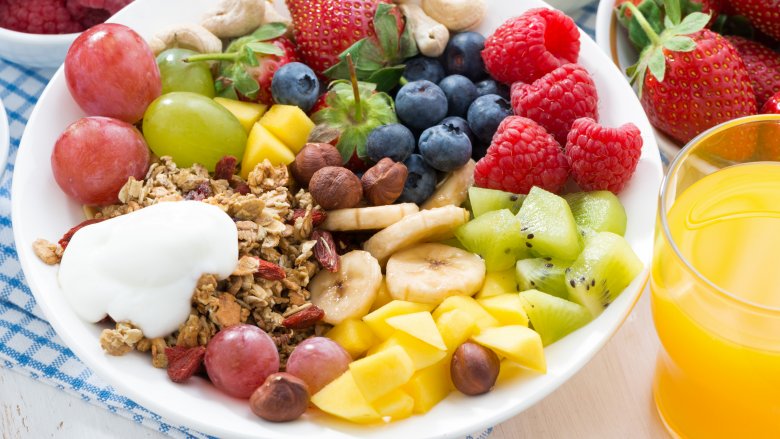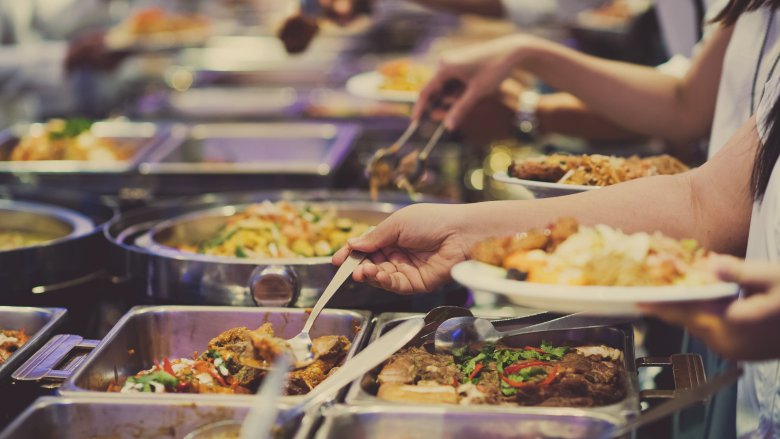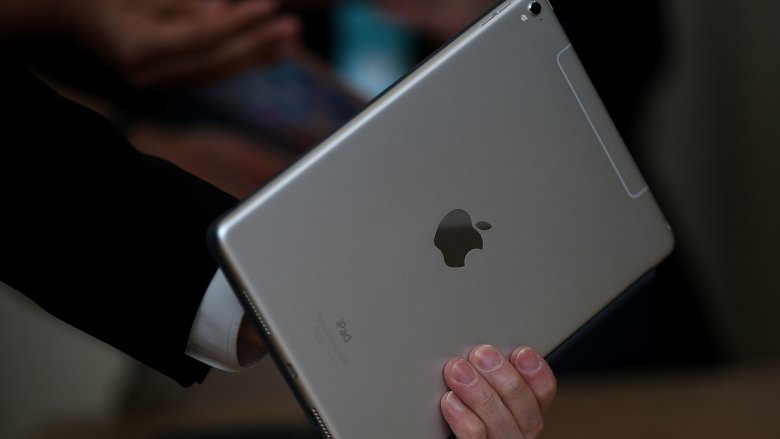Buffet Hacks To Really Get Your Money's Worth
The all-you-can-eat buffet is a monument to Americans' love of excess, variety, and value. But when it comes to the foods available, these establishments have plenty of tricks up their sleeves to keep the costs of customers' consumption low and their profits high. It is a business, after all, and they're out to make a buck or two while still letting you think you're getting an amazing deal. For every pricey item they offer — prime rib, crab legs, and sushi rolls, for example — they also put out plenty of cheap filler items like rice, pasta, and bulk veggies, all designed to keep you from digging too deep into the pricier platters.
A recent survey said one in 10 Americans felt they spent too much money in 2018 and want to do better in the current year. An easy way to do that is by spending less on food by eating at home — though there's not a lot of fun in that. Another way to save is by skipping trendy sit-down restaurants for cost-effective buffets. But even though these establishments are known for their relatively low prices, you still want to make sure you're getting your money's worth when you go. These hacks can help hungry bargain hunters make the most of their meal ticket without excessively pushing the boundaries of the definition of "all-you-can-eat."
Don't starve yourself leading up to the meal
You may think that fasting all day before you hit the buffet will leave you with plenty of room to fill up — and there is some truth to that. However, starving yourself all day before you head out to eat can have some unintended consequences. According to the number four ranked competitive eater in the world Matt "Megatoad" Stonie, it's best to "not starve yourself" before you head to the buffet because it can lead to stomach cramps before you've even gotten to your second plate.
Rather than fasting completely, make sure your meals leading up to buffet are light in nature. Yogurt, cereals, and soups are good meal options that won't fill you up for hours on end. Something else "Megatoad" recommends for the serious buffet-goers: Drink plenty of water to keep your stomach pliable throughout the day and ready for the task ahead of you. Carry a big bottle around with you all day and set a timer to go off periodically and remind you to take a swig.
Exercise beforehand
Physical activity can sometimes have an impressive impact on your appetite. But if you're specifically looking to stimulate your hunger, you have to be mindful about the intensity and timing of your workout. According to exercise physiologist and researcher at Loyola University Chicago Lara Douglas (via U.S. News), "The harder you exercise, the more blood you're pulling away from the gut and the less hungry you're going to feel." However, once you've recovered from your workout, your hunger will return. The amount of time it takes to recover is proportional to how long you were active — the amount of time you exercise is about the same amount it will take for your body systems to return to baseline and cue your appetite.
This is backed up by a study published in The Journal of Endocrinology that measured levels of ghrelin — a hormone thought to influence appetite — in 18 healthy, fit young men. When ghrelin levels rise, so does hunger. The study found that hormone levels remained suppressed one hour post workout when workouts were the longest, at 90 minutes versus 45 minutes. So if you want to feel hungry and ready to chow down by the time you get to the buffet, make sure you are rested and recovered from your long workout for at least an hour before you head there.
Drink something fizzy
You'd think that if your goal was stuffing as much food down your throat as possible, washing it down with water would be your best beverage bet, right? Turns out, no.
After a research team at Birzeit University in Palestine found that, in laboratory tests, rats given carbonated drinks ate more food than rats given non-carbonated equivalents, researchers at the BBC teamed up with Dr. James Brown from Aston University in Birmingham to run their own experiment and see if fizzy drinks have the same effect on human hunger. To determine the amount of hunger, the team measured levels of ghrelin in the participants' blood 10 minutes after they were given various types of fizzy drinks (including carbonated water), as well as the total amount of calories they ate throughout the rest of the day. The results found that carbonated drinks lead to approximately 50 percent higher ghrelin levels than the total results for non-carbonated drinks. Furthermore, participants ate around 120 calories more after drinking carbonated drinks.
It's not just scientific research that backs up the appetite-stimulating properties of fizzy drinks. According to competitive eater Randy Santel, drinking carbonated soda toward the end of the meal is a "common tool that many professional food challengers use around the world" to make it easier when finishing those last few bites. The burps help expel excess air, freeing up perceived space in your stomach. Additionally, while the intense acidity of soda isn't super great for your tooth enamel, it can help break down foods quicker so you have more room to binge.
Enlist the help of booze
Ever notice how starved you feel after a night out drinking? It's no coincidence. According to a study conducted by the Francis Crick Institute in the U.K. (via Readers Digest), alcohol directly affects the parts of the brain — namely, the hypothalamus and its its AgRP neurons – that are responsible for eating. This tricks your brain into flipping into starvation mode. So having a drink or two that boosts your appetite makes it that much easier to get the most for your money at the all-you-can-eat buffet.
Drinking before a meal to stimulate the appetite isn't anything new — for hundreds of years, people have taken apertifs before opulent meal to prepare their bodies. Not only does the alcohol affect the hypothalamus, it also increases levels of norepinephrine in the brain. Norepinephrine is the neurotransmitter responsible for arousal, which leads to increased excitement and impulsivity. This leads to lower inhibitions, shutting up that voice in your head that says "not another plate of food... you don't need it."
Of course, buying drinks at the buffet isn't going to be the most cost-effective thing. According to Bloomberg Businessweek (via Chron), alcohol sales account for around 30 percent of a restaurant's revenue. They keep it that way by marking up drink prices and counting on the customer's buzz to keep them ordering. To get the inhibition-lowering effect of alcohol without spending too much (not to mention, reducing the risks of binge drinking) limit yourself to ordering one drink.
Dress appropriately
There is power in the clothes you wear and it's not just about how other people perceive you. How you dress impacts the way you think, feel, and perform on an occasion. If you're walking into an all-you-can-eat buffet with the goal of getting the most for your money, you need to dress the part. Take a note from three-time Nathan's Hot Dog Eating Contest women's champion Miki Sudo and dress in "loose fitting pants... with high elasticity." Try a big, baggy shirt that has enough room to cover your midsection to get your head in the right frame of mind to conquer that buffet.
Comfort isn't the only key here, either. If you really want to stimulate your appetite, try using color psychology. Ever notice how restaurant chains — in particular, fast food joints — largely use the color red in their logos and marketing materials? When you look at the color red, it increases the heart rate and raises your blood pressure. This increases your metabolism, making you feel hungrier and ready to chow down. Wear something red if you want to increase your chances of a second (or third) helping.
Assess the selection
You haven't eaten anything more than cereal all day and you're wearing your favorite stretchy pants and red shirt — seems like you're ready to hit that buffet, right?
WRONG!
If you want to make the most of your all-you-can-eat experience, you have to study the terrain and figure out what your options are. If you go in blindly, you'll fill your plate up with whatever looks good at first sight and take up real estate for the high dollar items you really want. Staking out the offerings and figuring out what you can't go without before you start loading your plate makes it less likely that you'll accidentally over-serve yourself cheap, bulk items like pastas and breads.
Remember: all-you-can-eat buffets use certain psychological tactics to influence what diners serve themselves. Among their strategies is surrounding the more expensive items with four or five cheaper dishes like rice and vegetables. Instead of scooping these boring sides onto your plate, keep on moving to the next dish you scoped out when you were analyzing what was on display (like the prime rib and the seafood).
Know what costs the most (and least)
Knowledge is power — even when it comes to something as silly as stuffing your face at an all-you-can-eat buffet. If you don't know how much things cost normally, there's really no way you can know which items are most worthy of your time and appetite. Of course, there are tons of different types of this meal service, and a brunch buffet served at a swanky hotel isn't going to have the same dishes as your favorite hometown Chinese buffet. But, overall, these are some good guidelines for figuring out the most and least expensive items at the buffet.
Most expensive:
- Whatever meat is at the carving station — hopefully prime rib, which can cost about $17 per pound.
- Fresh seafood options — not fried. Crab legs, lobster, oysters, and scallops are all good bets.
- Intricate sushi rolls. Yes, they have starchy rice, but sushi is rather pricey, so grabbing a bite or two is worth it.
- If the buffet has a selection of fine cheeses, go for it. Good cheese doesn't come cheap.
- Besides the carving station and seafood, all other meat options are going to give you the most bang for your buck.
Least expensive:
- In 2018, the cost of rice was only $.71 per pound, and the price doesn't vary much year-by-year.
- Other starchy dishes like potatoes and macaroni cost only pennies per pound.
- Avoid processed foods you can find in the freezer section of the supermarket — chicken fingers, french fries... anything fried, really. They're great for feeding the kiddos, but not for getting your money's worth.
Limit fiber-rich foods that make you feel full
Dietary fibers are carbohydrates that the body cannot digest. Instead of quickly breaking down into sugars like simpler carbohydrates, fiber passes through the body undigested which helps regulate your digestion as well as blood sugar. There are many benefits to eating plenty of fiber, including a lower risk of heart disease, Type 2 diabetes, and other diseases. Eating a high-fiber diet can also help when it comes to weight loss.
However, when you're trying to stuff your gut with as many buffet items as possible, this nutrient is not your friend. Because fiber is stays in your stomach for so long, it slows the digestive system down altogether, making you feel less hungry. Fiber also absorbs water and expands, resulting in a full, gassy feeling. If you're trying to eat as much as you can, that feeling is one you definitely want to avoid.
High-fiber foods you should limit at the buffet include:
- Green leaf veggies like lettuce, Swiss chard, and spinach
- Root vegetables like carrots, beets, turnips, and potatoes
- Seasonal vegetables like broccoli, asparagus, artichokes, squash, and string beans
- Legumes like lentils, black beans, split peas, and chickpeas
- Nuts and seeds including sunflower seeds, almonds, pistachios, and pecans
- Fresh fruits including apples, bananas, peaches, oranges, and berries
- Cereals and grains like oatmeal, bran, quinoa, and brown rice
- Whole grain products including pasta and bread
Find the best buffet deal
Of course, an easy way to ensure you're getting the most bang for your buck is by making sure you're spending the least amount possible. One easy way to pay less at your all-you-can-eat buffet of choice is by going during lunch hours. Since lunch tends to be slower at dinner, many buffets will lower their fee to encourage people to come in and eat. However, it should be noted that the buffet may not have all the same offerings it puts out during dinner hours. Whether or not this works for you depends on your personal preference when it comes to value versus variety.
Another great way to save money on buffets is by looking out for discounts. If you can't find a coupon or deal on sites like Groupon or LivingSocial, you can at least compare different options in your area to find the best price. However, it's really worth it to check the offers on coupon sites. Many times you can get a great price on a meal for two. Speaking of which...
Make it a social event
If you want to eat more, bring a friend along. Several studies have found evidence that when we eat with other people, we consume more food. In 2000, an American psychologist named John de Castro performed a study to see how eating in various-sized groups affects overall food intake. He found that "Meals eaten with one other person present were 33 percent larger than meals eaten alone," whereas increases of 47 to 96 percent in meal size were associated with meals eaten with a party of two to seven people (or larger).
Furthermore, a similar 2006 study found that eating with friends can increase a person's food intake by up to 18 percent. Even animals eat more when there's company – feed a critter until they're full, then present them with another of their species eating, and they will start eating again.
There are a few ideas as to why we eat more when there are others around us. For one, humans are easily influenced by what we perceive others are doing around us and often copy those behaviors. We are so influenced by those in our space, even the size of a person can influence what we eat. A psychological study led by Mitsuru Shimizu at Southern Illinois University found that people ate 31.6 percent more pasta and 43.5 percent less salad when in the company of an overweight person, notwithstanding the type of foods on their overweight companion's plate.
Or watch television
If you can't rope a friend or two to come down to the all-you-can-eat buffet with you, bring along your tablet or smartphone to catch up on your shows instead. Eating while zoned out in front of the television makes you eat more. Watching television draws attention away from the food on your plate and can stimulate food intake in the same way being engaged in a conversation can. A 2006 study found that eating while watching TV can increase appetite by 14 percent. In particular, food-related shows seem to have a greater effect on overall caloric intake.
Is it healthy to sit in front of the tube and eat copious amounts of prime rib, seafood, and sweets? Of course not. But there's really nothing healthy about an all-you-can-eat buffet in the first place, so if that's your concern you likely wouldn't be there in the first place. The point is, if you want to make it easier to gorge yourself silly at a buffet, finding a way to watch TV while you eat can help stimulate the appetite so you're getting more for the money you spent.
